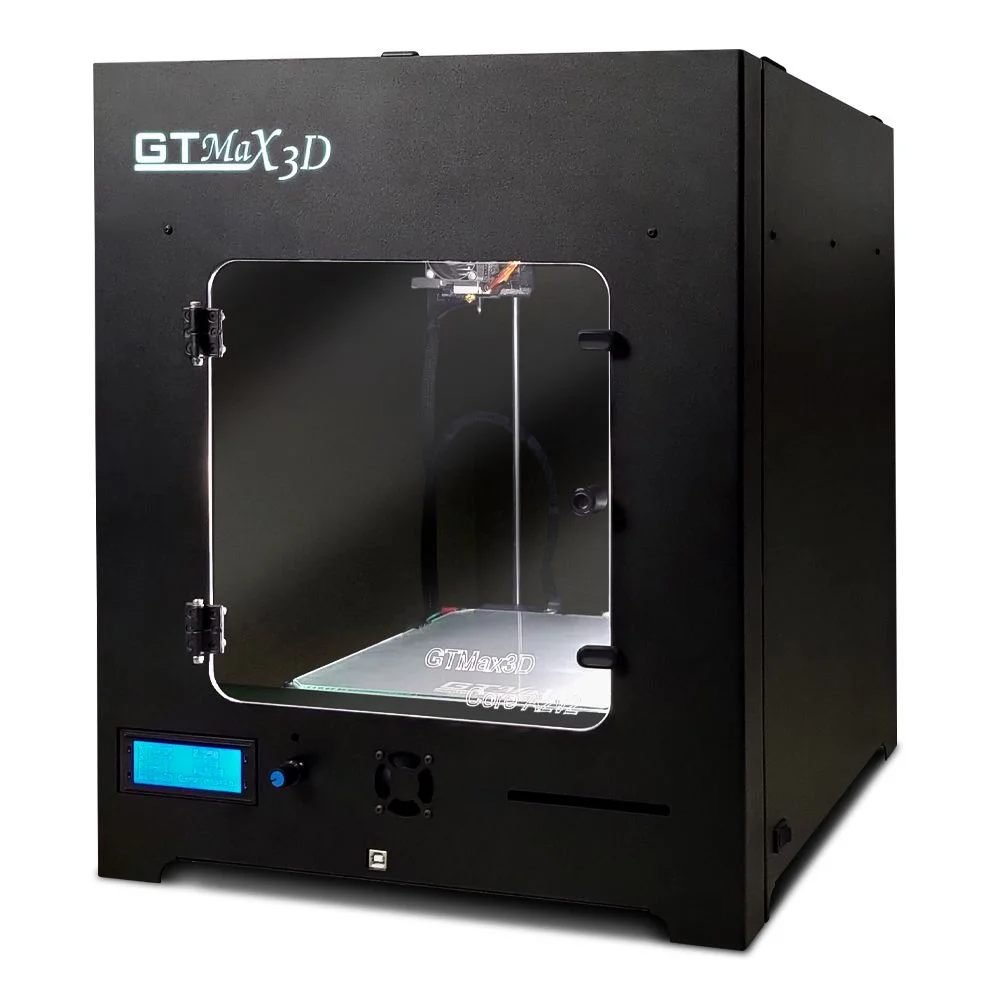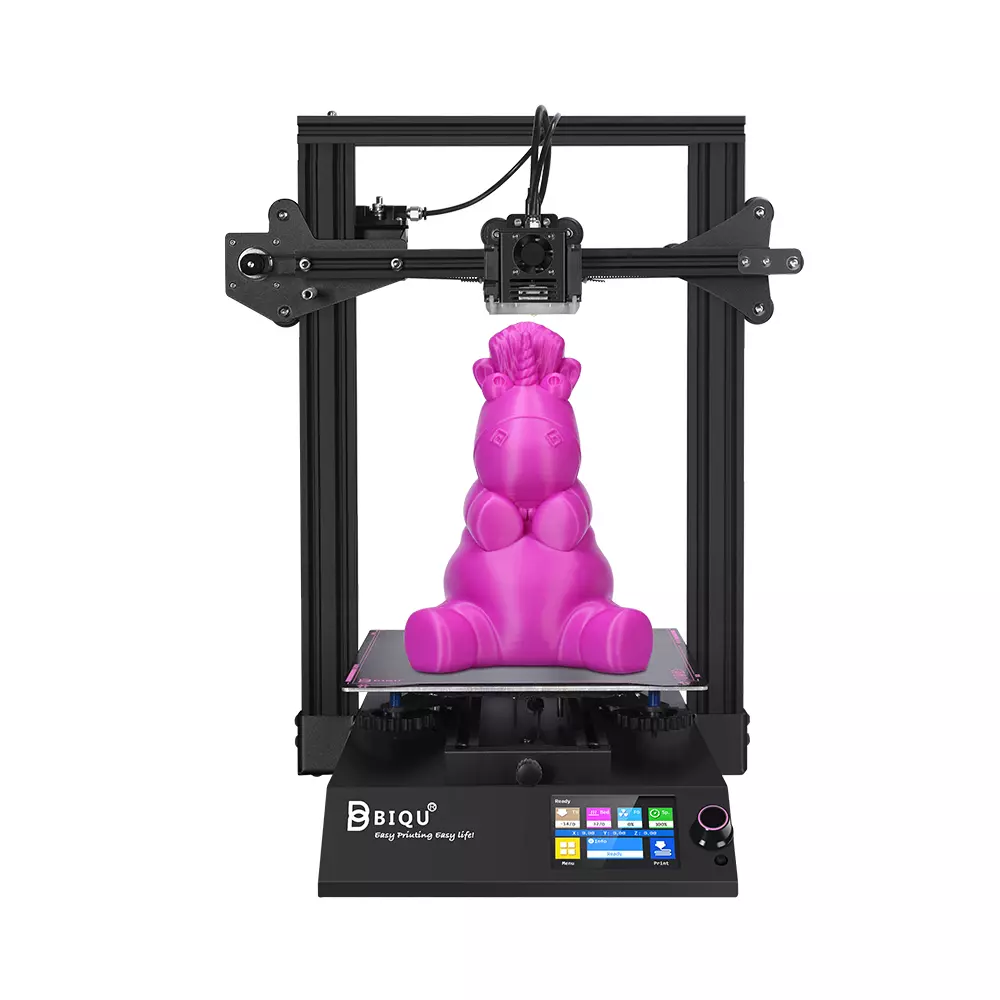Compare Core A2V2 vs BIQU B1
Comparison between the best 3D printers
Choose the best 3D printer at the best price. The cheapest 3D printers are here.
Buy a 3D printer here with 3D Fila.
 |
 |
|
| Model | Core A2V2 |
BIQU B1 |
| Printing Material | Filament | Filament |
| Buy Filament for GTMax Core A2V2 | Buy Filament forBigTreeTech BIQU B1 | |
| Estimated price | $684,00 | $269,00 |
| Manufacturer | GTMax | BigTreeTech |
| Release Year | 2019 | 2020 |
| Print Volume [mm] | 220x220x240 | 235x235x270 |
| Printer Size [mm] | 425x460x512 | 412x402x492 |
| Weight [kg] | 8,00 | |
| Power Loss Recovery | YES | YES |
| Enclosed printer | YES | NO |
| Bed Leveling | Manual | |
| Filament End Sensor | YES | YES |
| Bed type | Heated | Heated |
| Power supply system | Bowden | Bowden |
| Standard nozzle | 0,4 | 0,4 |
| Maximum Nozzle Temperature [°C] | 295 | 250 |
| Maximum Bed Temperature [°C] | 135 | 100 |
| Maximum printing speed [mm/s] | 150 | 100 |
| Filament holder | YES | YES |
| Camera for supervision | NO | NO |
| Recommended filaments | PLA, PETG, Tritan, Flex, ABS | PLA, TPU, ABS, PETG |
| Recommended slicers | Cura, Simplify, Slic3r, IdeaMaker | Cura, Simplify, Slic3r |
| Maximum Resolution [mm] | 0,05 | 0,1 |
| Processor | 32 Bits BTT SKR V 1.4 | |
| Display | Mono | Touchscreen TFT 3,5'' |
| Power Supply | 24V / 360W | |
| Connectivity | SD / USB | SD / USB |
| Operating systems | Windows, Mac, Linux | Windows, Mac, Linux |
| Date of registration in the system | 2022-11-12 | 2021-04-14 |
| Release date | 2019 | 2020 |
| Extra features | The GTMax3D ProCore A2v2 is a compact and robust 3D printer with a printing area of ??220 x 220 x 240 mm. It offers high print quality, ranging from 0.05 mm to 0.32 mm. Its features include automatic filament detection and changing, travel speed of up to 300 mm/s, and a heated aluminum bed with a glass top. It has automatic bed leveling with 16 points and an all-metal hotend that reaches up to 298°C. The printer has a carbon steel frame with electrostatic painting, is automatic bivolt and has connectivity via USB and SD card. The Bowden system and core xy kinematics complete its advanced features. | The BIQU B1 is an advanced 3D printer with a silent 32-bit BTT SKR V1.4 motherboard and ARM Cortex-M3 CPU, offering DIY interfaces (I2C, SPI, WiFi) and dual Z-axis. Its dual BTT B1 TFT35 V3.0 operating system allows real-time monitoring and multiple printing modes, including G-code visualization effects. It stands out for its BIQU SSS (Super Spring Steel), ensuring easy model adhesion and simplified removal, with the possibility of using it on both sides. It includes a filament sensor, automatically pausing printing in case of filament breakage. The multicolored RGB lights integrated into the hotend allow you to view the printing status even at night. Additional notes include the need for a BIQU-specific Type-C cable and extra interfaces for smart filament sensor and BL Touch. |
| Support for multiple colors and materials (AMS and CFS) | NO | NO |
Notes * |
||
| Cost-benefit | 6 / 10 | 7 / 10 |
| Hardware | 2.5 / 10 | 2 / 10 |
| Tela | . | . |
| Print volume | 3 / 10 | 3 / 10 |
| Performance | 1 / 10 | 1 / 10 |
Conclusion |
| In the comparison between the Core A2V2 and the BIQU B1, several key aspects emerge that can guide potential buyers in their decision-making process. Firstly, the pricing is a significant differentiator, with the BIQU B1 being substantially more affordable than the Core A2V2. This price disparity may appeal to hobbyists or those newly entering the world of 3D printing who may not want to invest heavily upfront. In terms of specifications, the BIQU B1 boasts a larger print volume and a slightly larger printer size, providing users with more flexibility in their projects. It also supports a diverse range of filaments, making it suitable for various applications. However, the Core A2V2 excels with its advanced features such as a higher maximum nozzle and bed temperatures, which could be beneficial for more complex materials and higher print quality, especially at finer resolutions. The enclosure feature of the Core A2V2 offers better temperature control and is ideal for printing with materials that require stable atmospheric conditions. In contrast, the BIQU B1 lacks this feature, which may limit its versatility for certain filament types, but its open design may be more accommodating for general use or modification. Both printers share several essential features including power loss recovery and manual bed leveling, while each has its distinct advantages in terms of hardware and performance metrics. The BIQU B1 slightly edges out in overall cost-benefit and hardware ratings. In conclusion, the choice between the Core A2V2 and the BIQU B1 largely hinges on the user’s specific needs and budget. If an advanced, high-temperature, enclosed option with better print quality is vital, the Core A2V2 is the clear choice. Conversely, for those seeking a cost-effective solution with good print volume and decent reliability, the BIQU B1 stands out as an attractive alternative. Ultimately, both 3D printers have their unique strengths that cater to different segments of the market. |

